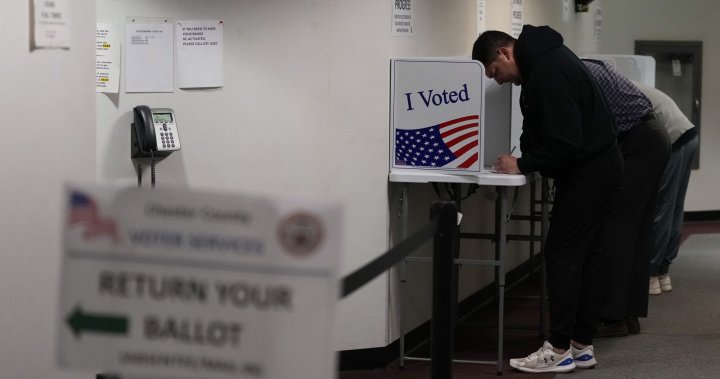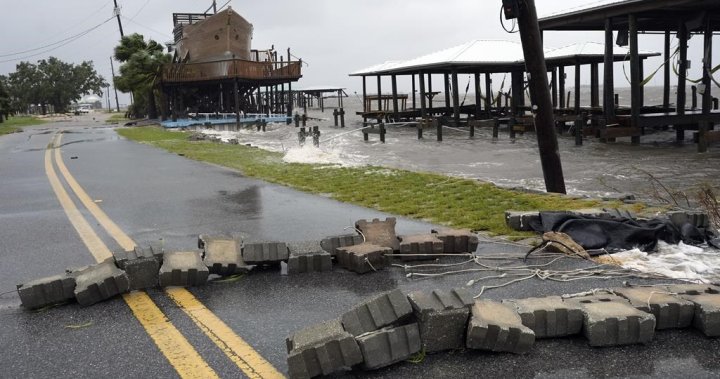The U.S. presidential race between U.S. Vice-President Kamala Harris and Donald Trump is expected to be extremely close, which means the winner may not be known until after Nov. 5.
One key reason why is that election workers across the country will have to count millions of mail-in ballots — including in key battleground states that each have their own rules for handling and counting those votes.
Early voting numbers suggest turnout is expected to be high. Roughly 70 million Americans have already cast a ballot in either early voting or by mail, and more than 67 million mail-in ballots have been requested, according to the University of Florida’s Election Lab.
Almost two-thirds of U.S. voters cast an early ballot in 2020 — more than 100 million votes — as the COVID-19 pandemic fuelled an expansion of voting by mail and advance in-person polling. That election wasn’t decided until four days after Election Day as those mailed ballots were counted.
Matthew Lebo, a political science professor at Western University who studies U.S. politics, said this election could take even longer to decide.
“It’s so close,” he said.
“If this all comes down to Pennsylvania, it could take a few more days.”
How mail-in ballots are counted
The latest FiveThirtyEight polling average shows less than two points separate Harris and Trump nationally. In the seven states that could ultimately decide the winner of the Electoral College and the presidency, the gap is just a fraction of one per cent — making every vote consequential.
In two of those states, Pennsylvania and Wisconsin, election workers are not permitted to start processing or tabulating mail-in ballots until 7 a.m. on Election Day, which means it will likely again take days before the outcome is known.

Processing requires each mail-in ballot to be manually opened and readied for counting, with workers flattening the ballots by hand.
Pennsylvania is seen as the most crucial battleground of them all, and opinion polls show Harris and Trump are effectively tied.

Get daily National news
Get the day’s top news, political, economic, and current affairs headlines, delivered to your inbox once a day.
The state is the key reason why the world had to wait four days to find out who won the 2020 election. As election workers made their way through a huge backlog of mail-in ballots, Pennsylvania eventually swung from what appeared to be a Trump lead to a win for U.S. President Joe Biden.
The other states seen as key battlegrounds — Arizona, Georgia, Michigan, Nevada and North Carolina — are allowed to start processing mail-in ballots before Election Day, which means counting can begin relatively quickly.
However, those states are also expected to be extremely close, and the sheer number of ballots that need counting could delay results there too.
In Arizona, where 90 per cent of ballots are cast by mail, counting cannot start until polls close. Voters can also drop off their ballots up until that time too.
“That also involves election officials driving around, collecting ballots from all over the place to count them up. So it’s a really long process,” said Samara Klar, a political science professor at the University of Arizona.
Georgia state law requires counting cannot begin until the morning of Election Day, but also says all early votes — in-person and mail — must be counted and reported by 8 p.m. local time on election night.
Lebo said if Harris or Trump can win at least a couple of those states decisively, the result may be known on election night — making Pennsylvania less consequential.
There may be fewer mail-in ballots to contend with this year, however, as the end of pandemic-era restrictions means voters are more comfortable voting in person.
In 2020, two-thirds of the 101 million advance votes were cast by mail. This year so far, early votes are roughly split evenly between in-person and mail, with nearly five million more ballots cast at physical polling places, according to the University of Florida Election Lab.
How the race will be called
Major American outlets on the ground will use all the information at their disposal to make the most accurate projections possible when calling a winner, relying on teams of polling and mathematical experts to map out the implications as polls are tallied and the Electoral College impacts become more clear.
The Associated Press Decision Team, which many international media including Global News will be watching closely, dispatches journalists to polling places across the country who work with vote entry clerks and election officials to feed data back to the Decision Team.
That team then analyzes the data and looks at whether trailing candidates are far enough behind that there’s no chance to overtake the winner.

That means some states that typically vote overwhelmingly for one party — for example, California and New York for Democrats, or Kentucky and Tennessee for Republicans — can almost always be called early on election night, while battleground states will take longer depending on how close the candidates are.
“We’re trying to call races as soon as possible but never at the risk of making a mistake and declaring a winner when they’ve not actually won,” David Scott, who oversees the AP Decision Team, told NPR last week.
Several media outlets have their own decision teams, which have their own criteria for when to call races. That means some close states may be called before or after the AP makes a call.
An example of that happened in 2020, when Fox News called Arizona for Biden before any other outlet. The call ended up being correct and marked a key moment when it became apparent that Biden may win the election outright.
Amid the delay in calling a winner in 2020, Trump pre-emptively and falsely declared victory on election night. As an early Republican lead in several states diminished during counting of mail-in and other ballots, he spread since-debunked claims of widespread voter fraud as responsible.
Trump has repeatedly said during the 2024 campaign that he’ll only lose if the election is “rigged” or if Democrats “cheat.”

A survey by the Associated Press-NORC Center for Public Affairs Research released Monday shows Americans are concerned about what may come after Election Day, particularly if a winner isn’t immediately clear.
About four in 10 registered voters said they are “extremely” or “very” concerned about violent attempts to overturn the results after the November election. A similar share was worried about legal efforts to do so. And about one-third of voters said they are “extremely” or “very” concerned about attempts by local or state election officials to stop the results from being finalized.
Lebo said the public needs to remember the electoral process at its core can be trusted.
“Every time ballots are counted there are Democrats and Republicans watching,” he said. “These are fair elections, and the counting of ballots is done fairly.”
—with files from the Associated Press and Reuters





